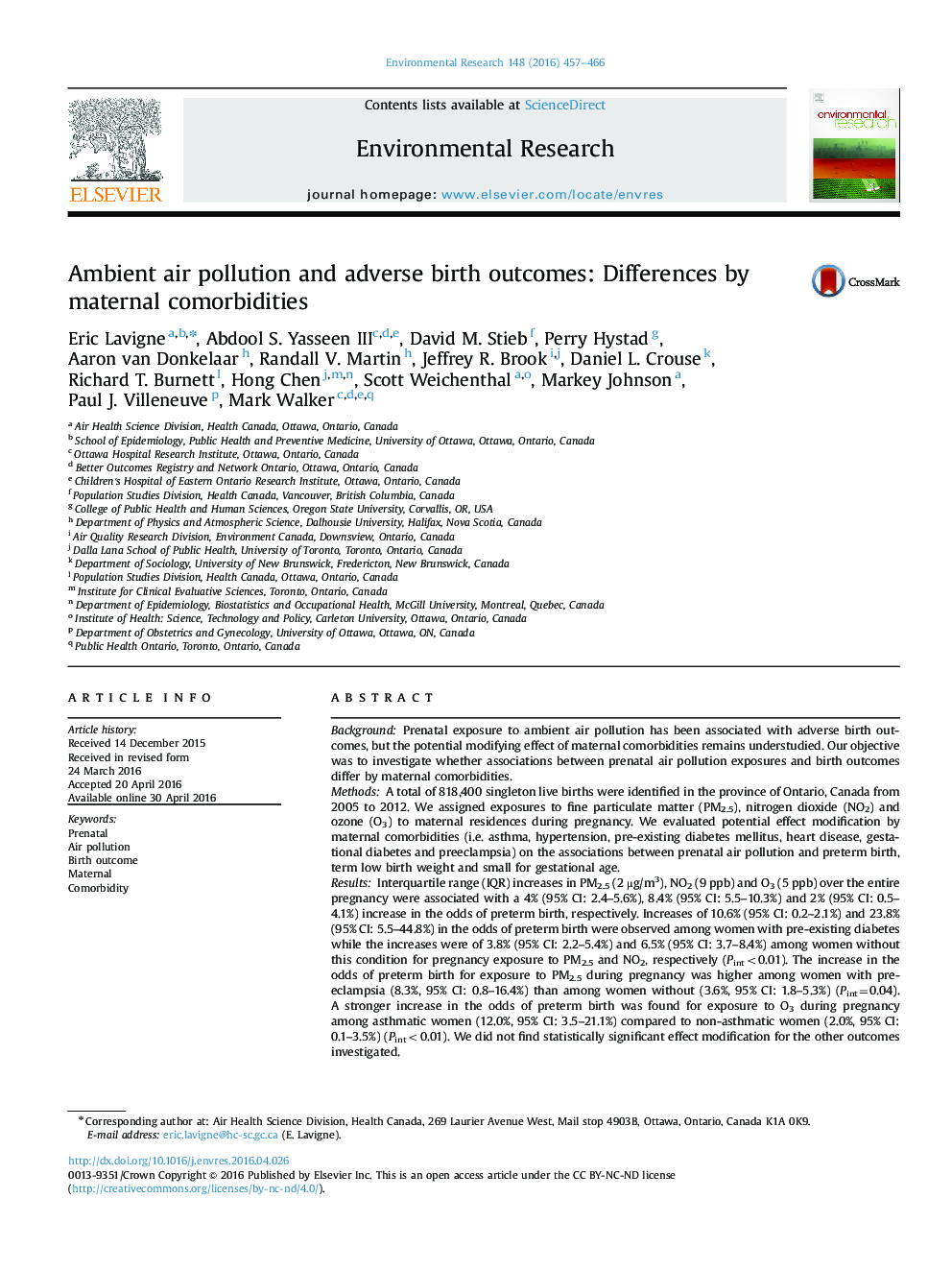| کد مقاله | کد نشریه | سال انتشار | مقاله انگلیسی | نسخه تمام متن |
|---|---|---|---|---|
| 6351537 | 1622555 | 2016 | 10 صفحه PDF | دانلود رایگان |
- Prenatal exposure to air pollution is associated with adverse birth outcomes.
- Effects of PM2.5 and NO2 on preterm birth are higher among diabetic mothers.
- Effects of ozone on preterm birth are higher among mothers with asthma.
BackgroundPrenatal exposure to ambient air pollution has been associated with adverse birth outcomes, but the potential modifying effect of maternal comorbidities remains understudied. Our objective was to investigate whether associations between prenatal air pollution exposures and birth outcomes differ by maternal comorbidities.MethodsA total of 818,400 singleton live births were identified in the province of Ontario, Canada from 2005 to 2012. We assigned exposures to fine particulate matter (PM2.5), nitrogen dioxide (NO2) and ozone (O3) to maternal residences during pregnancy. We evaluated potential effect modification by maternal comorbidities (i.e. asthma, hypertension, pre-existing diabetes mellitus, heart disease, gestational diabetes and preeclampsia) on the associations between prenatal air pollution and preterm birth, term low birth weight and small for gestational age.ResultsInterquartile range (IQR) increases in PM2.5 (2 μg/m3), NO2 (9 ppb) and O3 (5 ppb) over the entire pregnancy were associated with a 4% (95% CI: 2.4-5.6%), 8.4% (95% CI: 5.5-10.3%) and 2% (95% CI: 0.5-4.1%) increase in the odds of preterm birth, respectively. Increases of 10.6% (95% CI: 0.2-2.1%) and 23.8% (95% CI: 5.5-44.8%) in the odds of preterm birth were observed among women with pre-existing diabetes while the increases were of 3.8% (95% CI: 2.2-5.4%) and 6.5% (95% CI: 3.7-8.4%) among women without this condition for pregnancy exposure to PM2.5 and NO2, respectively (Pint<0.01). The increase in the odds of preterm birth for exposure to PM2.5 during pregnancy was higher among women with preeclampsia (8.3%, 95% CI: 0.8-16.4%) than among women without (3.6%, 95% CI: 1.8-5.3%) (Pint=0.04). A stronger increase in the odds of preterm birth was found for exposure to O3 during pregnancy among asthmatic women (12.0%, 95% CI: 3.5-21.1%) compared to non-asthmatic women (2.0%, 95% CI: 0.1-3.5%) (Pint<0.01). We did not find statistically significant effect modification for the other outcomes investigated.ConclusionsFindings of this study suggest that associations of ambient air pollution with preterm birth are stronger among women with pre-existing diabetes, asthma, and preeclampsia.
Journal: Environmental Research - Volume 148, July 2016, Pages 457-466
